Information for Prospective Lab Members
If you are a highly motivated undergrad or prospective grad student and are excited about wildlife research in behavioural ecology, ecophysiology and/or conservation biology I’d love to hear from you. I am especially interested in students with (or eligible for) NSERC PGS or other scholarship support. Grades are important but I place just as much emphasis on attitude, work ethic, quantitative skills and enthusiasm. The UofW doesn't have a Ph.D. program in Biology yet but I supervise Ph.D. students via adjunct status at the University of Manitoba. If this sounds like you, email me your CV or resume, an unofficial transcript and a paragraph explaining your interest in doing research in the lab.
Current Lab Members
Post-Doctoral Researchers
Yvonne Dzal, Ph.D., Liber Ero Post-Doctoral Fellow
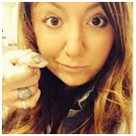
Yvonne completed her Ph.D. at UBC in 2018 studying mechanisms that allow some animals, including bats and naked mole rats, to cope with low oxygen conditions. She has helped pioneer methods for understanding cutaneous gas exchange in mammals and is an expert in thermoregulation and energy balance in small-bodied animals and is now bringing this expertise to the study of disease mechanisms in WNS.
Quinn Fletcher, Ph.D.

Quinn is a Research Associate with the University of Winnipeg Bat lab. In his research, he tests the efficacy and practicality conservation actions that aim to help bats recover from the fungal disease called white nose syndrome. Moreover, he in interested in how the timing of hibernation fits in with the life-history of bats. As a part of the Neighbourhood Bat Watch team, Quinn enjoys sharing his passion for bats and science with the citizen scientist participants of this program.
M.Sc. Students
Malcolm Reimer, B.Sc., NSERC Canada Graduate Scholar
Malcolm does some stuff with bats too
Pranav Sadana, B.Sc. Hons, Research Manitoba Master's Student

Pranav joined the lab as a research assistant in 2021 before starting his masters in 2022. He completed his undergrad from University of Toronto with double majors in Animal Physiology and Ecology and Evolutionary Biology with a minor in Mathematics. For his masters, Pranav is studying physiological and behavioural mechanisms that help little brown bats accumulate fall fat reserves.
Ershiya Bagheri, B.Sc. Hons, U. of Winnipeg Graduate Scholar

Ershiya joined the lab in the fall of 2020 all the way from Iran. She completed her Bachelors in Microbiology with Honours. Ershiya will be studying critical habitats of endangered bat species through radio-telemetry.
Sophia Brown, B.Sc. Hons, President's Distinguished Graduate Student Scholar

Sophia completed her Bachelors in Ecology, Evolution, and Environmental Biology with a minor in wildlife science in Purdue University. She joined the bat lab in the spring of 2020, where she will be studying the movement and behavior of little brown bats in the fall and spring shoulder-seasons.
Alyssa Stulberg, B.Sc. Hons, NSERC Canada Graduate Scholar

Alyssa joined the lab after completing her undergraduate work at the University of Regina. She is leading a large collaborative project with researchers from the U.S. and Canada to test approaches for reducing the environmental load of the WNS fungus in hibernation sites of endangered bats.
Kristina Muise, B.Sc. Hons, NSERC Canada Graduate Scholar
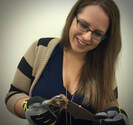
Kristina completed her B.Sc. Honours in the lab in 2014 studying the pre-hibernation foraging behavior in a northern population of little brown bats (Myotis lucifugus) and, after several years of working in the veterinary profession in Manitoba, has returned to complete her M.Sc. She is currently studying the hibernation behaviour and physiology in big brown bats (Eptesicus fuscus) to understand underlying resistance mechanisms for this species to a invasive fungal disease called white-nose syndrome.
Nicole Dorville, B.Sc. Hons, Commonwealth Scholar

Nicole is a long-distance import from Singapore, where she worked in the zoo and freshwater entomology research (at separate times). She also studied wildlife conservation biology in Melbourne, and has experience in rehabilitating captive injured bats. Her latest task is to revive the Campus Wildlife Laboratory for Disease and Ecology (C-WiLDE) to study the disease mechanisms of WNS and to test potential treatments to benefit to species at risk bats.
Trevor Moore, B.Sc. Hons

Trevor joined the lab in Fall of 2016. He is from southern Utah, where he graduated with a Bachelors in Biology and a minor in chemistry. His main area of focus was ecology, and studied prey selection in garter snakes and sound differences in hissing cockroaches. Here at the Bat Lab he is interested in helping bats recover from white-nose syndrome and is researching thermodynamics in bats that are in WNS positive areas.
Research Coordinator
Kaleigh Norquay, M.Sc. (NSERC Canada Graduate Scholar)
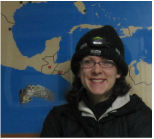
Kaleigh has been working in the lab since 2008 in various capacities, including as a honours' and masters' student. She has investigated the hibernation phenology and long-distance movements of little brown bats and modeled survival estimates for bats with White-Nose Syndrome. Her current role involves coordinating field research, administrative support and public outreach.
Former Lab Members
Lab Manager
Heather Mayberry, M.Sc.

Heather was with us for two years as our fearless Lab Manager. Heather studied at McMaster University in Hamilton, ON with Dr. Paul Faure. For her master's work, Heather researched the development of frequency modulated vocalizations in big brown bat pups. Heather completed her Ph.D. in 2019 with Dr. John Ratcliffe at the University of Toronto Erindale.
Post-Doctoral Reseachers
Christina Davy, Ph.D. (Liber Ero Post-Doctoral Fellow)
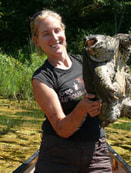
Christina uses a combination of molecular and field studies to study the conservation needs of threatened species and populations, and to understand how behavior affects genetic diversity in small populations. Her Ph.D. thesis focused on conservation genetics of freshwater turtles. Christina’s Post-Doctoral research investigated the genetic response of North American bats to white-nose syndrome, and the population structure of two common bat species across Canada. Christina is now a Research Scientist for the Ontario Ministry of Natural Resources and Forestry. Additionally, Christina runs her own lab at Trent University and is an Adjunct Professor at Trent University and the University of Manitoba.
Liam McGuire, Ph.D. (NSERC Post-Doctoral Fellow)
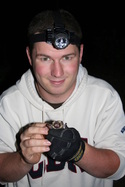
Liam is broadly interested in how animals cope with situations of energy limitation. For his Ph.D. research, Liam studied the ecophysiology of bat migration. His post-doctoral research addressed questions of hibernation physiology in North American and European bats, and the implications for white-nose syndrome. He is now an Assistant Professor at the University of Waterloo.
Lisa Warnecke, Ph.D. (Government of Canada Post-Doctoral Research Fellow)
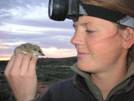
Lisa earned her Ph.D. studying thermoregulation and torpor in small marsupials in Australia and won a prestigious Government of Canada PDRF to apply her expertise in ecophysiology, thermoregulation and behaviour to questions about white-nose syndrome (WNS) in bats. She is now a Post-Doctoral Fellow at the University of Hamburg.
James Turner, Ph.D. (Post-Doctoral Fellow)
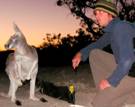
James (shown here with his field assistant) was an Australia Ph.D. import who completed his thesis on thermoregulation in pygmy possums in 2010. He used his experience with open-flow respirometry and energetics to address physiological effects of WNS in bats. His is now an Alexander von Humboldt Post-Doctoral Fellow at the University of Hamburg.
Mary Timonin, Ph.D., NSERC PDF (Cornell University)

Mary completed her Ph.D. on the neuroendocrine basis of paternal behaviour at Queen's University in 2008 and worked on a range of projects in the lab as a Post-Doc from testing the efficacy of thermal refuge sites as a possible mitigation for white-nose syndrome to addressing links between animals’ individual “personalities”, energetics and physiological stress. She has since been a NSERC Post-Doctoral Fellow at Cornell University and completed the DVM program at the University of Saskatchewan.
Ph. D. Students
Mary-Anne Collis, M.Sc.
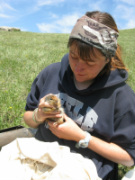
MAC is a UK import who has traveled widely across the globe studying various species and aspects of conservation and behavioural ecology. She joined our lab as a Ph.D. student working on the pre- and post- white-nose syndrome (WNS) survival and movement of little brown bats assessed using PIT-tags and remote data logging systems. See her website here.
Masters' Students
Ana Breit, M.Sc.

Ana joined the lab in 2015 and is an import from Wisconsin, where she studied biology and wildlife ecology research and management. She also dabbled in microeconomics, which she hopes to apply to animal behavior with respect to social interactions. With the Willis lab, Ana studied how social group composition, weather, and resource abundance affect pathogen transmission. Ana moved to Orono, Maine in 2018 to pursue a Ph.D. at the University of Maine.
Andrew Habrich, M.Sc.

Andrew joined the lab in 2016 after graduating with a BSc honours in ecology from Concordia University in Montréal. He has an interest in interdisciplinary studies in science and hopes to apply this knowledge to conservation biology. For his project, Andrew studied how torpor expression in the fall and spring, as well as environmental variables, affect overwintering survival in little brown bats across different hibernacula. In 2020, Andrew moved to Ottawa, Ontario to pursue a Ph.D. at Carleton University.
Quinn Webber, M.Sc. Hons. (Manitoba Graduate Scholar)
Alana Wilcox, M.Sc., B.A. Hons. (NSERC Canada Graduate Scholar)
Zenon Czenze, M.Sc. (NSERC Canada Graduate Scholar)
Nadine Price, M.Sc.
Allyson Menzies, M.Sc. (NSERC Canada Graduate Scholar)
Felix Martinez-Nunez, M.Sc. (Manitoba Graduate Scholar)
Kristin Jonasson, M.Sc. (NSERC Canada Graduate Scholar)
Joel Jameson, M.Sc. (NSERC Canada Graduate Scholar)
Tracie Parkinson, M.Sc. (NSERC USRA Scholar)
Alana Wilcox, M.Sc., B.A. Hons. (NSERC Canada Graduate Scholar)
Zenon Czenze, M.Sc. (NSERC Canada Graduate Scholar)
Nadine Price, M.Sc.
Allyson Menzies, M.Sc. (NSERC Canada Graduate Scholar)
Felix Martinez-Nunez, M.Sc. (Manitoba Graduate Scholar)
Kristin Jonasson, M.Sc. (NSERC Canada Graduate Scholar)
Joel Jameson, M.Sc. (NSERC Canada Graduate Scholar)
Tracie Parkinson, M.Sc. (NSERC USRA Scholar)
Honours' Students
Haven Soto, B.Sc. Hons

Haven first joined the lab in 2017 as a field research assistant, working on a long-term bat population monitoring study and the heated bat house project. She then continued with the lab to complete her Honours project, where she studied the effect of white-nose syndrome on the pre-hibernation fat reserves of little brown bats. After the completion of her Honours in 2020, she has continued to work with the lab to co-run the social media accounts for Neighbourhood Bat Watch.
Lauren Nash, B.Sc. Hons

Lauren completed her Honours project in 2019. She studied behaviour of endangered Manitoba little brown bats after the invasion of white-nose syndrome to test the hypothesis that WNS selects for behaviour that reduce energy expenditure and the risk of acquiring the fungal infection that causes WNS.
Sarah Teillet, B.Sc. Hons
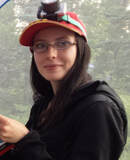
Sarah finished her Honours project in 2019 using plasma metabolite analysis to test the hypothesis that WNS selects for increased fattening and more intense feeding behaviour in bats that survive the winter with WNS.
Emma Kunkel, B.Sc. Hons

Emma completed her Honour's thesis on thermoregulatory activity substitution in migratory bats in 2018. She has since completed her M.Sc. at Texas Tech University with Dr. Liam McGuire in 2020.
Amie Peterson, B.Sc. Hons

Amie completed a 4-yr B.Sc. in Spring 2015 but decided to complete her Honours degree after taking Craig’s field course in small mammal energetics last summer. For a summer field season, Amie assisted with PIT-tagging and sampling bats at maternity colonies throughout Manitoba and Ontario for the Neighbourhood Bat Watch program. Amie studied the relationship between stress hormones and personality in bats for her thesis.
Emily Beaton, B.Sc. Hons

Emily joined the lab for the 2015 field season. She helped sample maternity colonies across Manitoba and northwestern Ontario for the Neighbourhood Batwatch. In spring 2016, she completed her Honours thesis at Mount Allison University in New Brunswick, examining the relationship between personality, ectoparasites load and immune performance in little brown bats.
Dylan Baloun, B.Sc. Hons.
Shelby Bohn, B.Sc. Hons.
Chantal Carriere, B.Sc. Hons. (NSERC USRA Scholar)
Amanda Matheson, B.Sc. Hons. (University of Manitoba, NSERC USRA Scholar)
Scott Unruh, B.Sc. Hons.
Shelby Bohn, B.Sc. Hons.
Chantal Carriere, B.Sc. Hons. (NSERC USRA Scholar)
Amanda Matheson, B.Sc. Hons. (University of Manitoba, NSERC USRA Scholar)
Scott Unruh, B.Sc. Hons.
Research Assistants
Jane Harrington, B.Sc.
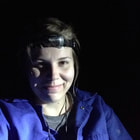
Jane joined the lab for the summer of 2015, where she assisted with the PIT tagging of bats at 22 maternity colonies. She was also essential in the building of heated bat boxes, a innovative way to reduce stress of WNS affected female bats. Jane started a degree in law in fall 2015.
Nastashya Wall, B.Sc. Hons.
Claire McKibbin, (NSERC USRA Scholar)
Derek Donald, B.Sc. Hons.
Aaron Trachtenberg, B.Sc. Hons.
Claire McKibbin, (NSERC USRA Scholar)
Derek Donald, B.Sc. Hons.
Aaron Trachtenberg, B.Sc. Hons.
